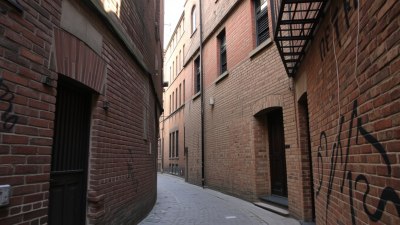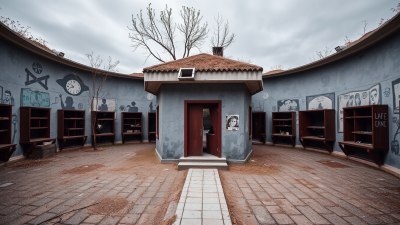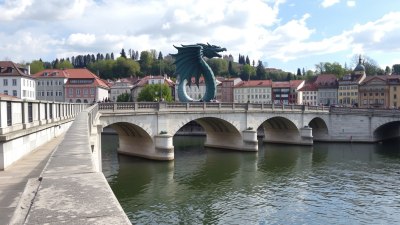When the Past Lurks in Every Alley
Explore the haunting echoes of history found in urban alleys and their stories.

Image created with Flux Schnell
Urban landscapes often serve as silent witnesses to the passage of time, encapsulating the memories of those who walked their streets long before us. The alleys of a city, with their brick walls and cobblestones, are remnants of history that whisper secrets to those who take the time to listen.
In many cities worldwide, alleys reveal a duality: they are both historical archives and spaces of contemporary life. Whether they are steeped in tales of commerce, art, or tumultuous events, they create a tapestry of memories that contribute to a city's identity.
The Historical Significance of Alleys
Alleys have long been integral to urban design. Historically, they facilitated trade, connecting backdoor entrances of shops, warehouses, and homes. This allowed artisans, vendors, and citizens to engage with one another in ways that the primary streets often could not accommodate. Over time, these alleys developed their personalities, becoming synonymous with certain trades, cultures, or communities.
For instance, in cities like London and Paris, alleys were often where immigrant communities thrived, establishing businesses and creating cultural enclaves. The bustle of activity in these narrow passages was a lifeline for these communities, often serving as gathering places for festivals, storytelling, and cultural exchanges.
Modern-Day Reflections
Today, many cities have recognized the potential of these alleys as vibrant urban spaces. Through revitalization projects, once-neglected areas are being transformed into cultural hotspots filled with art installations, restaurants, and community events. The past intertwines with the present as street art celebrates historical narratives, inviting passersby to engage with history creatively.
While modernity has brought life to these spaces, it has also sparked discussions about gentrification and the erasure of history. In the quest for urban renewal, it is vital to tread carefully, preserving the stories that underpin the cultural fabric while embracing innovation and development.
Alleys as Narrators of Memory
Each alley has its own story to tell, steeped in the lives of those who have traversed it. Take, for example, the historic alleys of Rome, where cobblestones have absorbed centuries of footsteps, both mundane and momentous. In the shadows of ancient architecture, tales of love, betrayal, and daily life unfold, creating a palpable connection to the past.
Moreover, in cities like New York, alleys have been revered for their role in shaping the urban experience. The graffiti and murals that adorn these walls honor the voices that may have been marginalized throughout history. They become platforms for storytelling and memorialization, reminding us of the struggles and triumphs that have shaped the community.
The Role of Art in Alleys
Art plays a pivotal role in illuminating the timeless nature of these urban spaces. Documenting the vibrant stories of the past, artists transform dull walls into canvases filled with color and meaning. Street art serves not only as decoration but also as a reflection of socio-political movements, personal narratives, and cultural identity.
Take the burgeoning street art scene in Los Angeles, where artists have utilized alleys as both a canvas and a commentary on the city's ongoing evolution. The narratives depicted in this work often evoke nostalgia for the past while simultaneously critiquing contemporary issues, keeping history alive in the collective memory of city dwellers.
Preserving the Layered Histories
As demands for urban development increase, the preservation of alleys as conduits of history becomes paramount. Community participation is key in these efforts, enabling residents to advocate for the conservation of the historical significance of their neighborhoods. Engaging local historians, artists, and residents can create a collective narrative that respects both tradition and progress.
In instilling a sense of ownership in these spaces, community members can protect their alleys from becoming mere commodities in urban revitalization. Events such as history walks, storytelling sessions, and local art exhibitions can strengthen this connection, building awareness and appreciation for the past while fostering a sense of belonging.
The Influence of Technology
The rise of technology has further transformed our interactions with urban spaces, including alleys. Augmented reality (AR) applications can reveal hidden stories and histories to users as they explore these alleys. This technology leads to a multi-layered understanding of the past and creates an interactive experience that fosters a deeper connection with urban heritage.
Museum collaborations and digital storytelling initiatives further aid in chronicling the rich narratives embedded within these spaces. Engaging younger generations through tech and media allows for the preservation of local history in innovative ways, ensuring that future inhabitants understand and value the stories of those who came before.
Walking Through Time: Anecdotes from the Streets
As we journey through urban alleys, it's helpful to pause and reflect on anecdotes that shape our understanding of these spaces. For instance, an alley in a historic neighborhood may become the backdrop for a chance meeting, a life-changing conversation, or a shared moment that binds strangers. These daily interactions contribute to the collective memory of a place.
Some alleys have even become sites of historical events, serving as backdrops to protest movements, creative expressions, or acts of community resilience. By recognizing these stories, we breathe life into the environment, infusing it with meaning and connection to the past.
Challenges in Urban Planning
Urban planning poses its own set of challenges regarding alley preservation. While development often seeks to maximize space and introduce modern facilities, the risk of overlooking historical alleys is ever-present. Strategic planning can integrate these unique spaces within urban frameworks, allowing them to coexist harmoniously with contemporary architecture.
City planners and architects must recognize the inherent value of alleys as both cultural and historical resources. By developing guidelines that protect these spaces, cities can ensure that the stories they hold do not fade away amidst progress.
Case Studies of Successful Revitalization
Looking to places where alley revitalization has been successfully implemented can offer insight into best practices for preserving historical essence. The Back Alley Project in Calgary, Canada, is a compelling example. This initiative transformed an underutilized alley into an arts district, showcasing local talent while honoring the street's historical background.
Similarly, in Melbourne, Australia, laneways known for their hidden cafes and art galleries have been revitalized while maintaining their historical character. These spaces not only reflect the past but also drive economic activity, providing a model for how alleys can evolve sustainably.
The Future of Alleys
As we navigate the complexities of urban development, the commitment to preserving the stories etched into the facades of alleys remains vital. They are the veins of the city, pulsating with the memories and aspirations of its inhabitants. By reflecting on the past, respecting local narratives, and embracing innovative approaches, we can ensure that these spaces retain their significance amidst the ever-changing landscape of urban life.
Ultimately, the past will always lurk in every alley, inviting us to explore its depths and uncover the stories waiting to be told. Through setting aside time to listen, we forge connections between ourselves and the history that shapes our urban environments, creating vibrant communities that honor their past as they stride confidently into the future.











